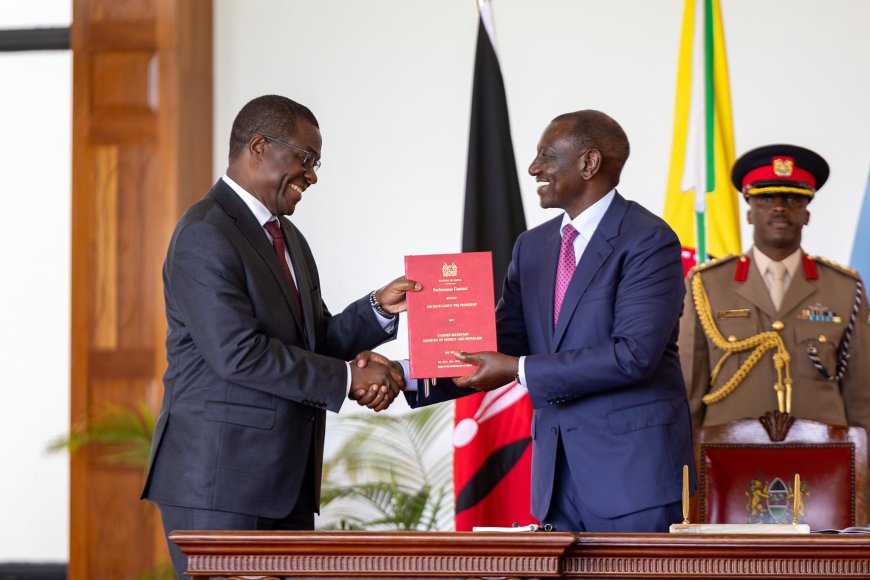Why Kenya's Lights Go Out At Night: CS Wandayi On Ruto's Remarks
Wandayi said the government has established comprehensive measures to minimize power outages.

Energy and Petroleum Cabinet Secretary Opiyo Wandayi has addressed President William Ruto’s remarks regarding the country’s frequent evening power rationing, commonly referred to as load shedding.
Speaking to the Senate on Wednesday, November 19, Wandayi said the government has established comprehensive measures to minimize power outages.
“I know it has been a long time since we had a national blackout, but for localised blackouts, if and when they occur, we have put in place an elaborate system and mechanism to ensure the response time is as short as possible,” Wandayi said.
Although he didn’t explicitly mention load shedding, the CS responded to related questions by noting that localized power interruptions are often caused by trees near electricity poles.

Energy Cabinet Secretary Opiyo Wandayi speaking during an appearance at the Senate on November 19, 2025. /OPIYO WANDAYI
"These localised cases can be attributed to many factors, some of which involve vegetative growth, trees growing and sprouting along the road," he explained.
Wandayi also cited infrastructural constraints, particularly in electricity distribution, and population growth as additional contributors to outages in certain areas.
He further said that in regions where energy supply is limited, the government has initiated supplementary projects to maintain an adequate power supply nationwide.
"Where there are constraints in energy supply, we are implementing a complementary project to ensure an adequate supply going forward," he added.
The CS defended the government’s efforts, emphasizing that the aim is to provide a reliable electricity supply across the country.
Earlier, on November 5, President Ruto acknowledged that the government sometimes resorts to load shedding between 5 pm and 10 pm to stabilize the national grid amid growing electricity demand.
Ruto said that boosting Kenya’s power capacity to at least 5,000 megawatts would require over Ksh 1 trillion.
“Today in Kenya, between 5 pm and 10 pm, we have to do load-shedding. We have to shut off some areas to power other areas because our energy is insufficient. One data center requires 1,000 megawatts, but we only have 2,300 megawatts,” he said.
The president added, “If we have to industrialise and engage in manufacturing, we need a minimum of 10,000 megawatts of energy. We need to build at least 50 megadams: High Grand Falls Dam and Soin Koru Dam.”







